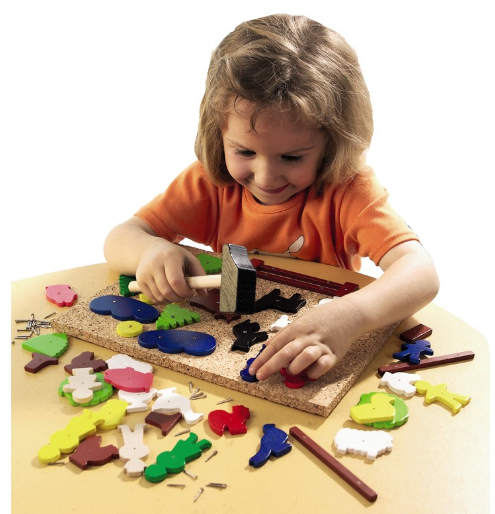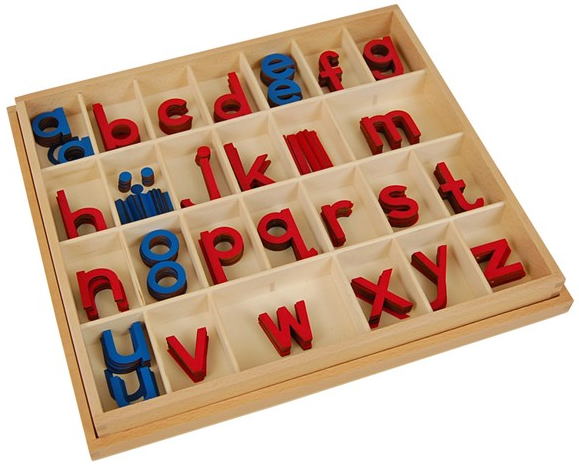Recognizing that the educational system proposed by the National Education at the present time is far from satisfactory, several Montessori schools are born every year. What is the basis of this success?
If we were to summarize the Montessori Method in one thought it would be the respect of the rhythm of each child. Focused on personal development, this alternative pedagogy has many other strings to its bow. The student is at the heart of the concerns; How to allow him to grow in joy, to develop his autonomy and to promote his confidence in him?
Maria Montessori, the first female Italian doctor devoted to the cause of children, wanted to answer this question. The Montessori Method is based on different principles. Children are free to move around as they wish in the classroom, to devote themselves to one or more activities for as long as they wish. The only condition is that they have first seen the activity in question with the teacher.
In line with this notion of freedom, self-discipline is encouraged in children. They are invited to correct themselves, to look for their mistakes with the sole objective of improving. Whether "right" or "wrong" is irrelevant. Also, the abstract side is eliminated to the maximum to give place to the tangible direction to what is concrete. For example, in mathematics, the child will use beads to count, divide or subtract. Thanks to this more playful and less academic approach, he can learn while having fun.
In addition, respect for others and for oneself is at the heart of the Kidadvance Montessori Teaching Materials. The school must prepare the child for a harmonious social and internal life.
Judged too permissive for some and revolutionary for others, the educator, and director of one of these alternative schools lifts the veil on this method that is debating. First, it is important to note that the Montessori pedagogy strictly addresses children aged 3 to 12, either in kindergartens and elementary schools.
Children do not have to wait for a new school year to change their class. In order to respect the rhythm of the pupil at best, this can be done during the year in order not to slow down or accelerate its development. The international dimension is also a part of the educational project.
Despite the freedom granted, these educators have a real role of a guide; the common goal is to get the child interested in all areas and create new experiences.
The aim is to enable it to "learn and learn" rather than simply to pass on knowledge to it. These "outsized" schools have a cost. Experts explain that the price varies from one school to another. Since they do not receive state subsidies, they are obliged to charge parents for all tuition fees. "Montessori" is not a protected name.
As a result, some schools report practicing this method when in reality it is not. It is, therefore, necessary to be vigilant and to consult the site of the Montessori teaching materials before enrolling its child in one of these establishments.
Recognizing that the educational system proposed by the National Education at the present time is far from satisfactory, several Montessori schools are born every year. What is the basis of this success?
If we were to summarize the Montessori Method in one thought it would be the respect of the rhythm of each child. Focused on personal development, this alternative pedagogy has many other strings to its bow. The student is at the heart of the concerns; How to allow him to grow in joy, to develop his autonomy and to promote his confidence in him?
Maria Montessori, the first female Italian doctor devoted to the cause of children, wanted to answer this question. The Montessori Method is based on different principles. Children are free to move around as they wish in the classroom, to devote themselves to one or more activities for as long as they wish. The only condition is that they have first seen the activity in question with the teacher.
In line with this notion of freedom, self-discipline is encouraged in children. They are invited to correct themselves, to look for their mistakes with the sole objective of improving. Whether "right" or "wrong" is irrelevant. Also, the abstract side is eliminated to the maximum to give place to the tangible direction to what is concrete. For example, in mathematics, the child will use beads to count, divide or subtract. Thanks to this more playful and less academic approach, he can learn while having fun.
In addition, respect for others and for oneself is at the heart of the Kidadvance Montessori Teaching Materials. The school must prepare the child for a harmonious social and internal life.
Judged too permissive for some and revolutionary for others, the educator, and director of one of these alternative schools lifts the veil on this method that is debating. First, it is important to note that the Montessori pedagogy strictly addresses children aged 3 to 12, either in kindergartens and elementary schools.
Children do not have to wait for a new school year to change their class. In order to respect the rhythm of the pupil at best, this can be done during the year in order not to slow down or accelerate its development. The international dimension is also a part of the educational project.
Despite the freedom granted, these educators have a real role of a guide; the common goal is to get the child interested in all areas and create new experiences.
The aim is to enable it to "learn and learn" rather than simply to pass on knowledge to it. These "outsized" schools have a cost. Experts explain that the price varies from one school to another. Since they do not receive state subsidies, they are obliged to charge parents for all tuition fees. "Montessori" is not a protected name.
As a result, some schools report practicing this method when in reality it is not. It is, therefore, necessary to be vigilant and to consult the site of the Montessori teaching materials before enrolling its child in one of these establishments.



















